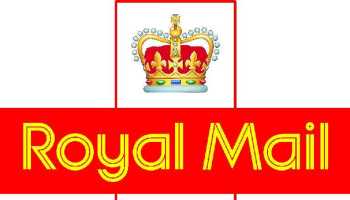Royal Mail Offers ‘Digitally Enhanced’ Post

Royal Mail has introduced digital watermarking to enable Britain’s post to become interactive
In an attempt to propel the postal service into the digital age, Royal Mail has introduced a new digital watermarking technology that allows businesses make their post interactive.
People wishing to receive ‘digitally enhanced’ post will need either an iPhone 3G or an Android powered phone, and will have to download the free Digital Space App. This will allow them to access rich media content by simply holding their phone over the digitally watermarked image.
Royal Mail claims the watermark can be embedded into pictures on leaflets and mailings, enabling marketers to integrate their print and online material without the need for barcodes, QR codes or special inks. This online content could include websites, photos, Facebook pages, and much more besides.
 “This solution combines the strengths of the post and the Internet, said Dave Smith, Royal Mail’s chief customer officer. “Digital watermarking technology means that a leaflet or mailing can open the door to a journey in the online world.
“This solution combines the strengths of the post and the Internet, said Dave Smith, Royal Mail’s chief customer officer. “Digital watermarking technology means that a leaflet or mailing can open the door to a journey in the online world.
“By scanning a picture on their post, someone could link through to a video of a holiday destination or a chef preparing their favourite meal. The possibilities are endless,” he added.
Intelligent stamps and matrix barcodes
The news follows Royal Mail’s introduction of ‘intelligent stamps’, which are designed to interact with smartphones using image-recognition technology, in September 2010.
The Royal Mail’s special-issue stamps were devoted to historic British railways. Snapping a picture of one of the stamps using an image-recognition application from Junaio would trigger a short film of English actor Bernard Cribbins reading W H Auden’s poem, ‘The Night Mail’.
Two-dimensional matrix barcodes also use image recognition to link smartphones to online content. The barcodes appear as a two-dimensional grid of black and white squares, often encoding a web address. When scanned by a smartphone the web address launches a page in the handset’s browser.
Microsoft used this technology in a beta version of its ‘Tag’ service, launched in 2009. Each Tag represents some kind of information (typically a web link) which is revealed when photographed with a mobile phone’s camera.
The idea was met with scepticism by industry commentators, with Business Insider’s Eric Krangel referring to Microsoft Tag as “another useless iPhone app”.
“We’re a bit sceptical on tagging: We’ve never seen a mobile tag, not sure if we’d be bothered to use one if we did, and think typing in a URL or web search is a pretty good way to find content on our mobile devices,” he wrote at the time.